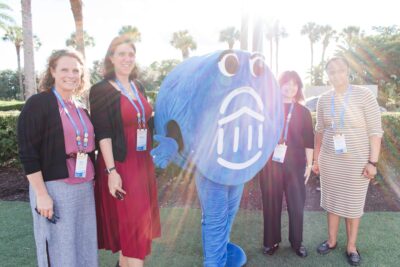5 strategies to get students to the career office within their first year
Updated February 2022 by Alessandra Falconer. Originally published September 2018.
Students often overlook a major professional development resource on campus: the career center. More than a quarter (27%) of graduates never once visited a career center during their time on campus. And just 22% reported using their campus career center resources often or very often.
But the career center can help students start their job search early, a factor that has been correlated with positive post-graduate outcomes. Students who began searching for a job 6-12 months prior to graduation had a 10% higher Gainful Employment Score compared to those who started later, according to EAB‘s survey of 6,000+ alumni. Those who started more than a year out saw a 15% bump in their Gainful Employment Score.
Yet most students don’t start their job search early enough. Researchers found that only 16% of students began their search a year out, while 34% began at the 6-12 month mark.
Here are several strategies colleges use to get incoming students to the career center from Day One.
1. Make your career center visible
It doesn’t matter how robust an institution’s career services are if students don’t know they exist. A first-generation student struggling to find an internship may not realize that advisors are available to help.
That’s why making career advising more visible is crucial to bringing in first-generation students unfamiliar with the service, Stephanie Kinkaid, the former assistant director of the Wackerle Career Center at Monmouth College, told the EAB Daily Briefing in 2016. She recommends that university leaders identify which social media channels get the best response from students and design advising awareness campaigns in those channels.
2. Discuss career prep early and often
Students tend to wait until their senior year to seek out career help. To get students to the career center faster, some colleges fold professional development into students’ first-year experience.
Grinnell College, for example, assigns every new student a dedicated career center advisor. The institution also schedules a mandatory meeting between first-year students and a career advisor before classes start.
3. Align professional and academic ambitions from Day One
Bentley University‘s career development course teaches students how to plan their academic experience to reach their career goals. The course is taken by 99% of first-year and transfer students, according to Alyssa Hammond, director of undergraduate career education and outcomes at the university.
The reason it’s important to do that early is that the student needs to develop these experiences—not just internships but all of these other experiences that you’re going to get during your college life.
Alyssa Hammond
Director of Undergraduate Career Education and Outcomes at Bentley University
“The reason it’s important to do that early is that the student needs to develop these experiences—not just internships but all of these other experiences that you’re going to get during your college life,” Hammond told the Hechinger Report. “How are they making you marketable? How are they driving you to a career you’ll really like?”
Co-curricular major maps also help students align their professional and academic ambitions. Queen’s University offers co-curricular maps that outline the career-related experiences students should complete during each year of study, including the first year. Each map also offers a list of 30 or more potential careers for each major and a list of technical and soft skills that students can expect to acquire by studying that major.
4 Elements to Include when Designing Experiential Major Maps
4. Restructure career center services
Several colleges reorganize their reporting lines or physically move the location of the career office to encourage collaboration and drive student traffic. James Madison University (JMU), for example, has merged academic advising and career services into a single office. JMU advising staff receive cross-training in both academic and career support. Advisors discuss academic and career planning with students simultaneously, encouraging students to see them as two sides of the same coin.
Other colleges combine counseling services and career services to address the anxiety students can feel during the job search process. Co-locating the two kinds of support can reduce stigma and make it easier for students to seek help.
At the Howard Community College in Maryland, the same staff members at the Counseling and Career Services provide both services. By helping students through personal crises, the department’s counselors build relationships with the students that can help during discussions about majors and careers.
5. Go virtual
For career services to become more central to their schools’ missions, they must successfully reach their target audience: the students. According to Robert Angulo, CEO of AfterCollege, this means going mobile.
“New technology needs to be mobile-enabled… Students don’t always put in the effort when it comes to starting their careers. Technology that serves them where they are is better than technology that forces them to go somewhere,” says Angulo. “Virtual is the way to go.”
Some institutions already use virtual reality to help students explore career options.
At Fox Valley Technical College, one faculty member uses virtual reality to expose students to the day-to-day work of electricians and HVAC technicians. And at the University of Florida, a newly renovated career center allows students to access events online, attend virtual workshops, and have virtual interviews.
More Blogs

Three lessons from 1,200 student success leaders on higher ed’s future

5 higher ed thought leaders we are following
